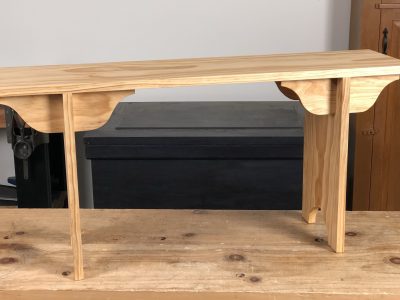Hand Tools, Exercises, and Projects for the Complete Beginner
Why Use Hand Tools
Working wood with hand tools is a much more tactile experience than feeding boards through a machine. While machines will saw or plane almost any piece of wood, ignoring grain direction and characteristics in many cases, hand tools allow the craftsperson to feel and understand the nature and grain of each individual board. Learning to “read a board” may not seem important in the age of wide belt sanders and CNC routers. However, even if you primarily use machines and power tools in your woodworking, as your skills improve, and your projects become more complex, you will eventually need to call upon hand tools to get you out of a bind, or to complete a task that cannot be fully accomplished with a power tool.
While it may take some time and practice on your part to become fluent and efficient using hand tools, the time spent learning these skills will be well worth it in the long run. If you’re just getting started on your journey to becoming a woodworker, learning to use hand tools right from the beginning will provide you with the opportunity to build a solid foundation of good techniques and work habits that will benefit you in all aspects of the craft. If you already have some experience using machines and hand-held power tools, learning to use hand tools will help you to refine your skill set and will liberate you from the limitations that many machines and power tool impose, allowing you to take your craft to the next level.
Foundations of Traditional Woodworking Class Series
The Foundations of Traditional Woodworking series of classes has been designed to introduce the new or intermediate woodworker to the use of traditional hand tools. Through this series of classes, the student will develop important, fundamental skills with hand saws, hand planes, chisels, and layout tools, as well as the most important skill of all – sharpening. Each class consists of a combination of demonstration, hands-on exercises, and projects designed around the class focus, so students will enjoy plenty of hands-on time with the tools.
While these classes may be taken in any order, our recommendation is to follow the progression below as skills learned in earlier classes will not be covered in detail in subsequent classes. Click below for a detailed description of each class in the series.



